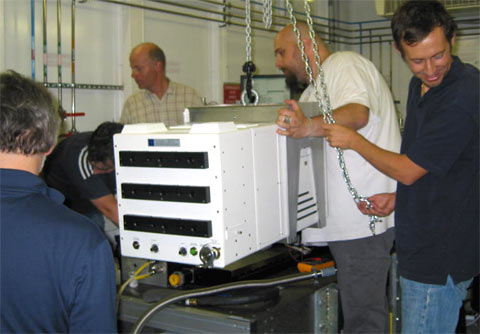- Home
- News
- Spotlight on Science
- New MX Detectors:...
New MX Detectors: Data Collection "à Grande Vitesse"
27-01-2006
When screening large numbers of crystallographic samples it is important that the opportunity to actually collect data exists. Often the pressure to return with some data leads to an inappropriate, or sub-optimal, sample being used when further screening may have lead to a more appropriate sample emerging. The hardest biological problems have always required extensive screening in order to make the problem tractable, at the ESRF we have supported these research activities by the development of sample changer systems and now by an investment in the X-ray detector systems available on the MX beamlines.
Share
During the months of October, November and December 2005, ADSC Q315 detectors were installed on the beamlines ID23-1, ID29 and ID14-4. These detectors enhance the capacity of our beamlines in a number of ways: The large surface area (315 x 315 mm2) and small pixel size for instance will enable the collection of data from extremely large unit cells (> 1500 Å being possible), thus opening new avenues of research.
 |
|
|
When integrated in to the beamline control system, the detectors also offer the possibility to collect crystallographic data at extremely rapid rates. Operated in "hardware binned" mode [1] one can expect to collect around 40 frames/minute (including exposure time!).
The installation of these detectors was co-financed by ESRF internal funding, by income generated by industrial activity, and a EU Specific Support Action grant to the Center for Integrated Structural Biology (contract number 011995).
Authors
Sean McSweeney and Vicente Rey on behalf of the Joint Structural Biology Group (JSBG) of the ESRF and the EMBL Grenoble Outstation
[1] In this mode pixels are merged using the capabilities of the read-out electronics and not with software. This mechanism is fast and results in smaller image sizes at the cost of some loss in spatial resolution.



